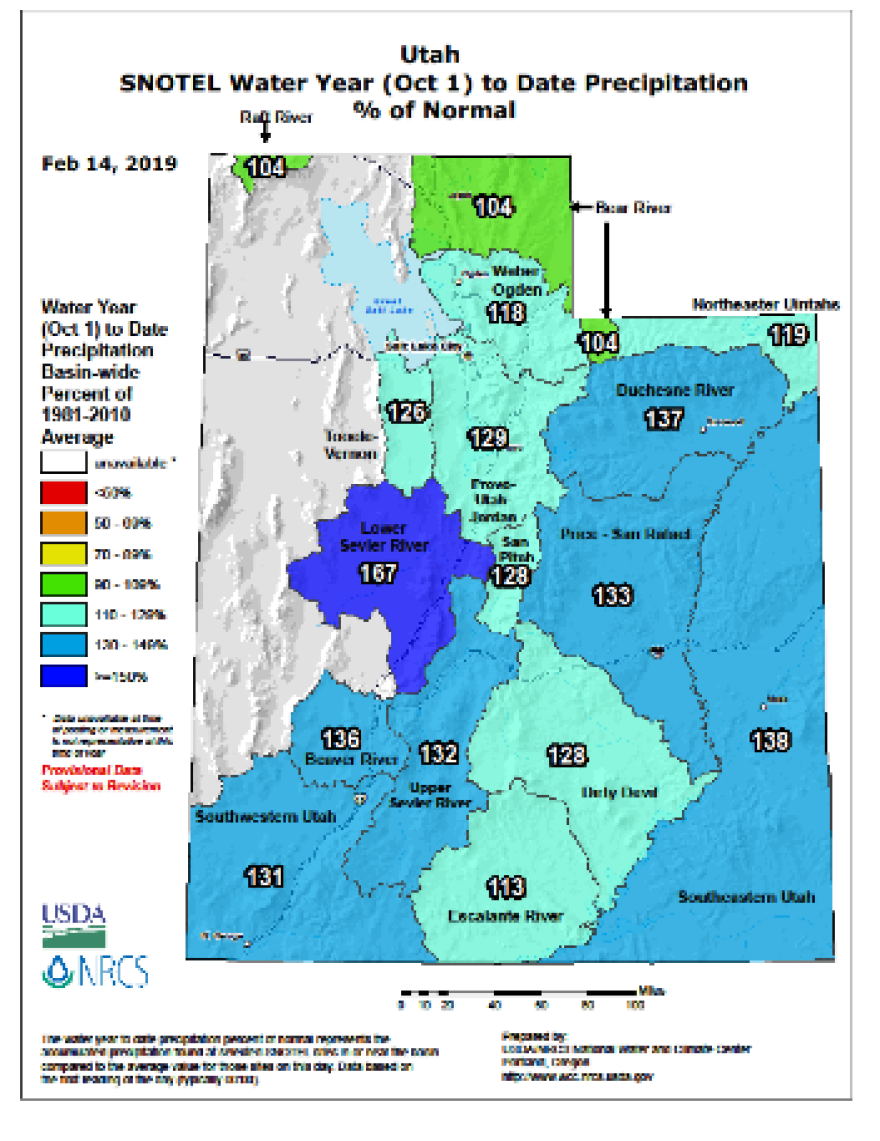Utah’s water picture looks bright so far this year — a big snowpack is just one reason why — and forecasters say the stormy trend is likely to continue.
“These storms have been bringing a lot of water — great for the snowpack, for water supply going into the runoff season and for ski conditions,” Glen Merrill, a meteorologist with the National Weather Service, said Friday during a meeting of hydrologists, forecasters and other climate professionals who track precipitation levels.

At the National Weather Service (NWS) offices near the Salt Lake International Airport, meteorologists have measured 13.1 inches of snow, nearly twice as much as normal.
“We’re going to stay at least semi-active and cooler than normal, so we’re set up great into March,” Merrill said.
The gathering at the NWS’s Salt Lake City offices was upbeat this time because of the normal or above average precipitation Utah’s been getting in places where the need is greatest in central and southern Utah. The routine meetings were gloomy last year because of a steady stream of bad news throughout what turned out to be Utah’s driest year on record.
Ranchers sold off sheep and cattle because the range was so poor and hay prices skyrocketed throughout the region. Utah Gov. Gary Herbert declared a drought emergency in October.
But water-watchers are hoping this winter’s wet trend will continue.
Troy Brosten, a hydrologist with the U.S. Department of Agriculture’s Natural Resources Conservation Service Snow Survey, pointed out that the snow-water equivalent is higher than average statewide, between 114 and 172 percent.

Brosten also said soil moisture was up, from 42 percent last year to 49 percent this year. Generally speaking, when soil moisture is good, runoff is more efficient.
One area that remains worrisome is reservoirs, reported Gary Henrie of the U.S. Bureau of Reclamation’s Provo office.
He said last year at this time reservoirs were 80 percent full on average, but communities and agriculture relied heavily on them through the exceptionally dry summer. Now, he said, the average levels in reservoirs statewide are 64 percent of normal, but water managers hope a good runoff this spring will help restore them.
According to the U.S. Drought Monitor, nearly half of Utah was experiencing “extreme” or “exceptional” drought at the beginning of the water year Oct. 1, with hotspots in central Utah and the Four Corners region. As of Thursday, that category applied to less than 2 percent of Utah lands in the far southeastern corner of the state.



